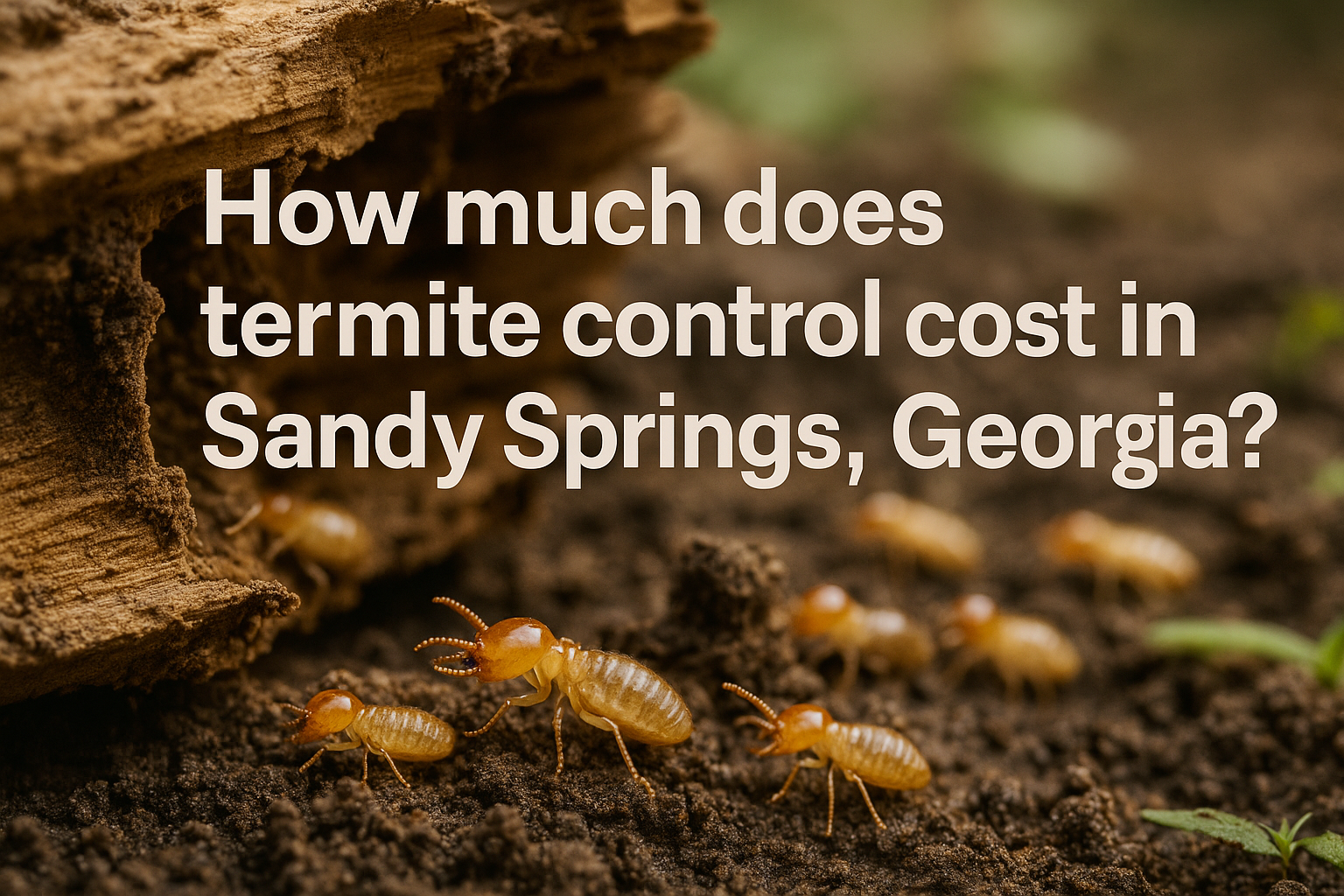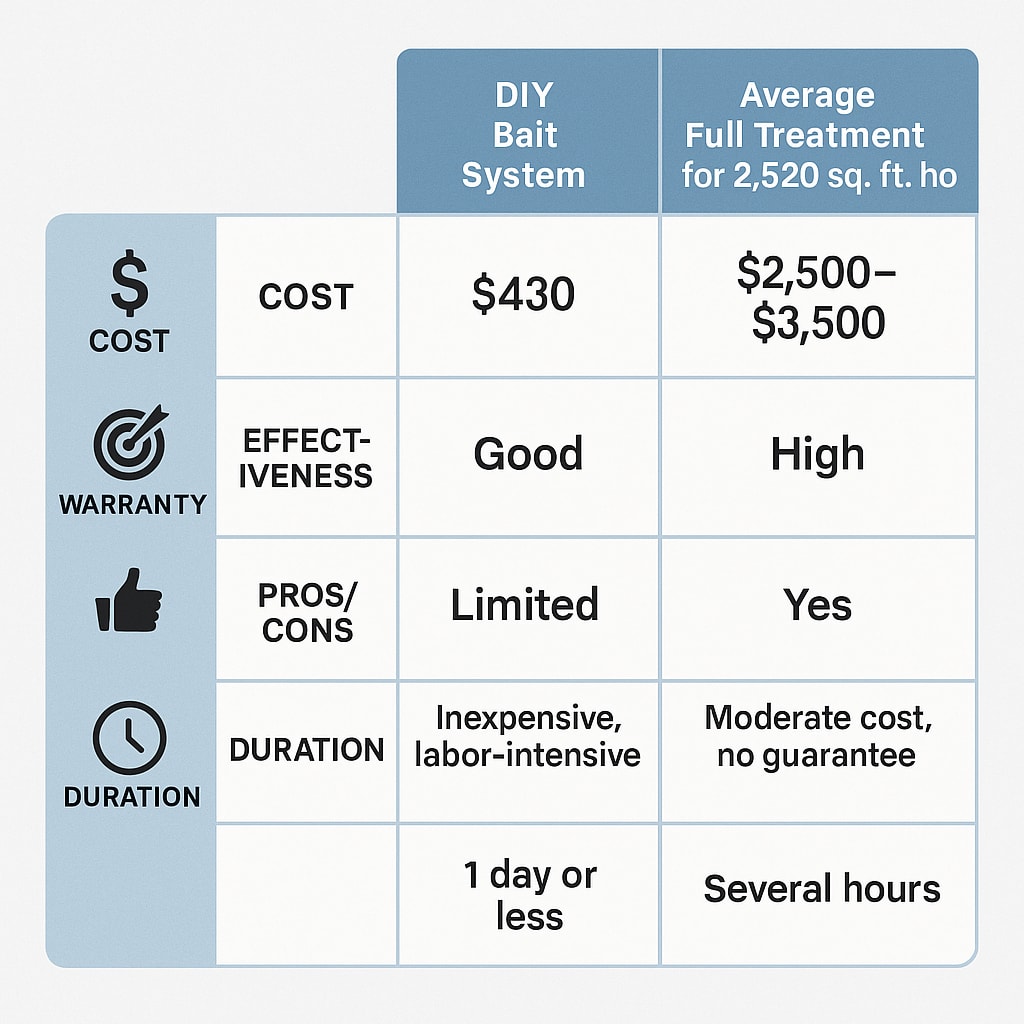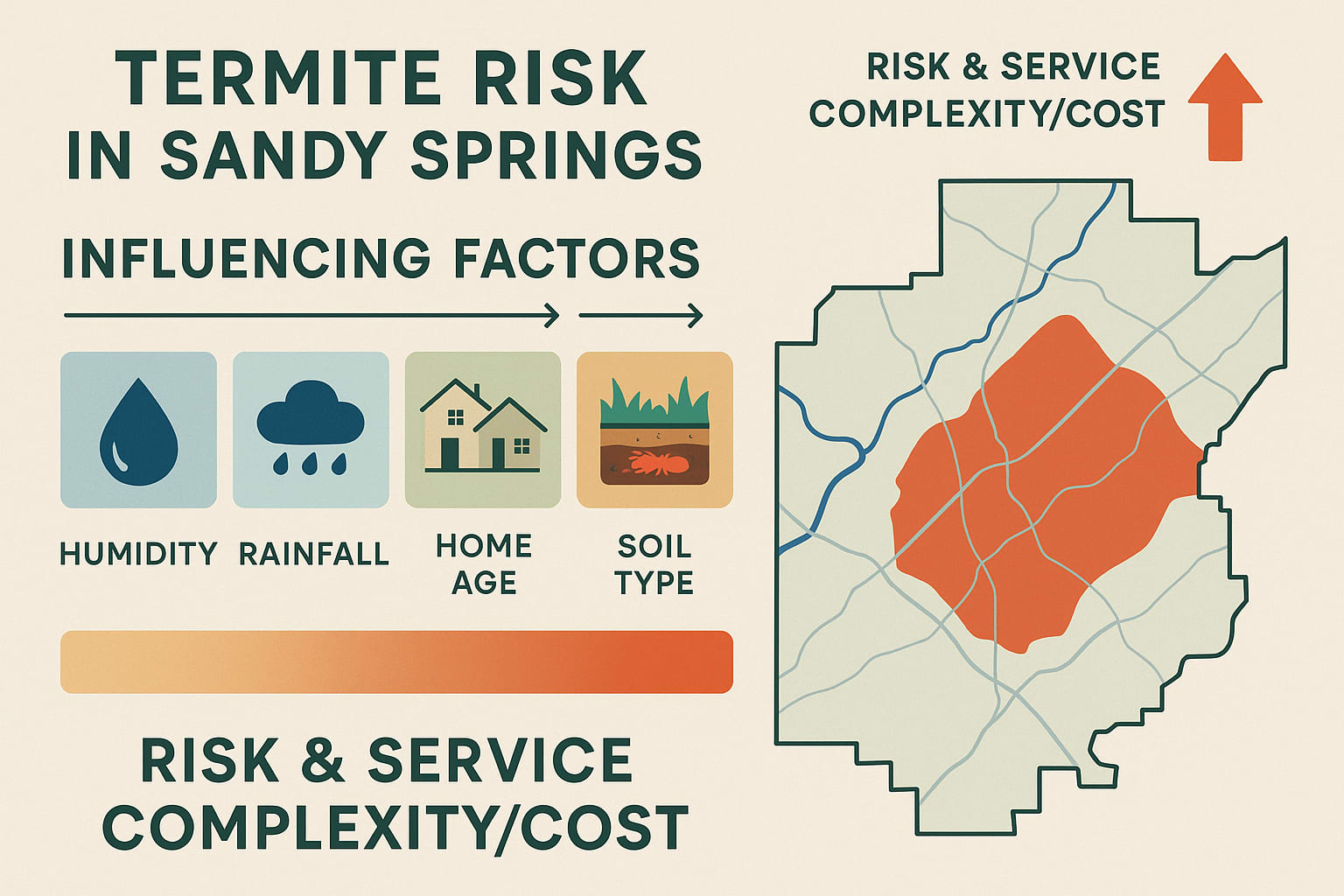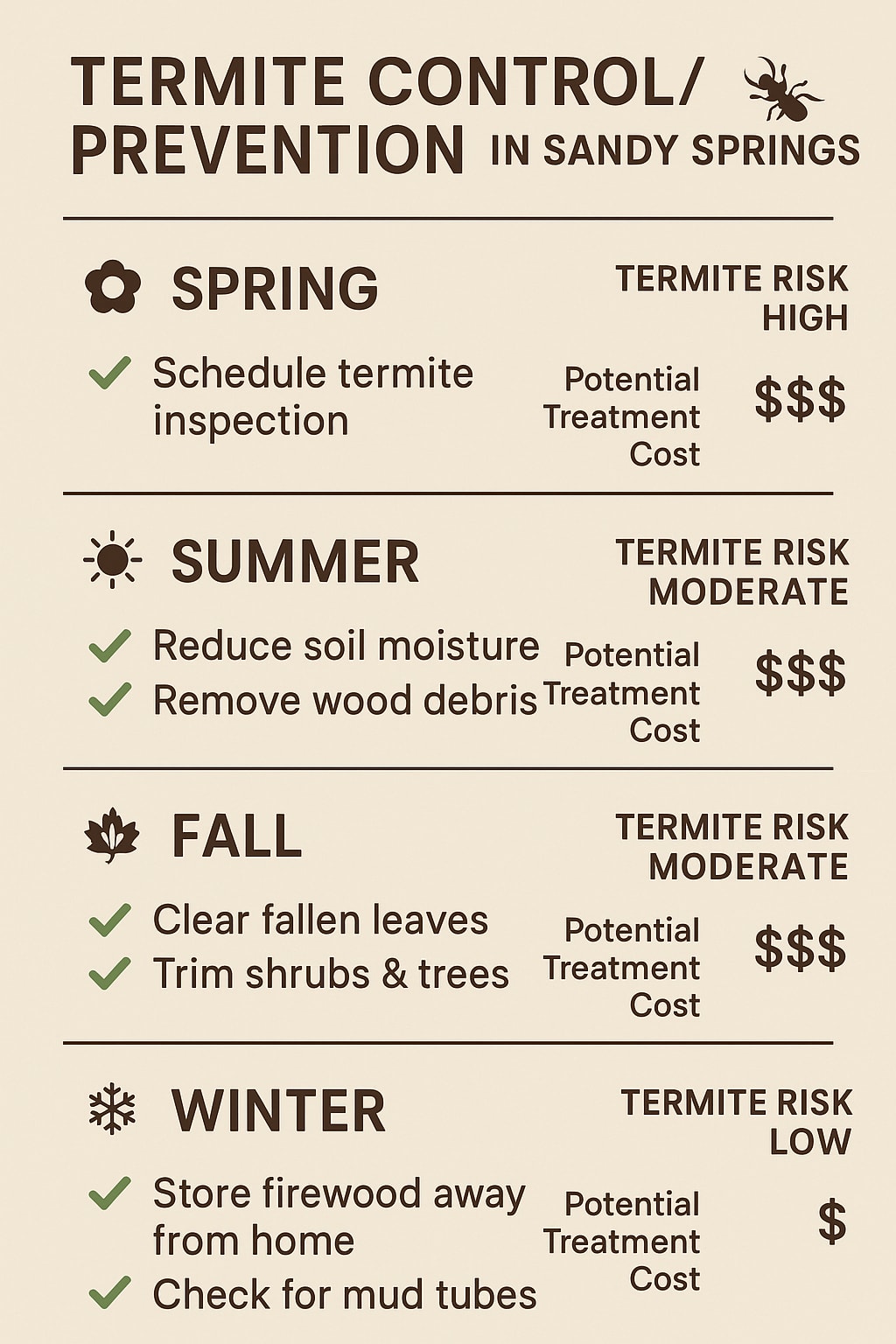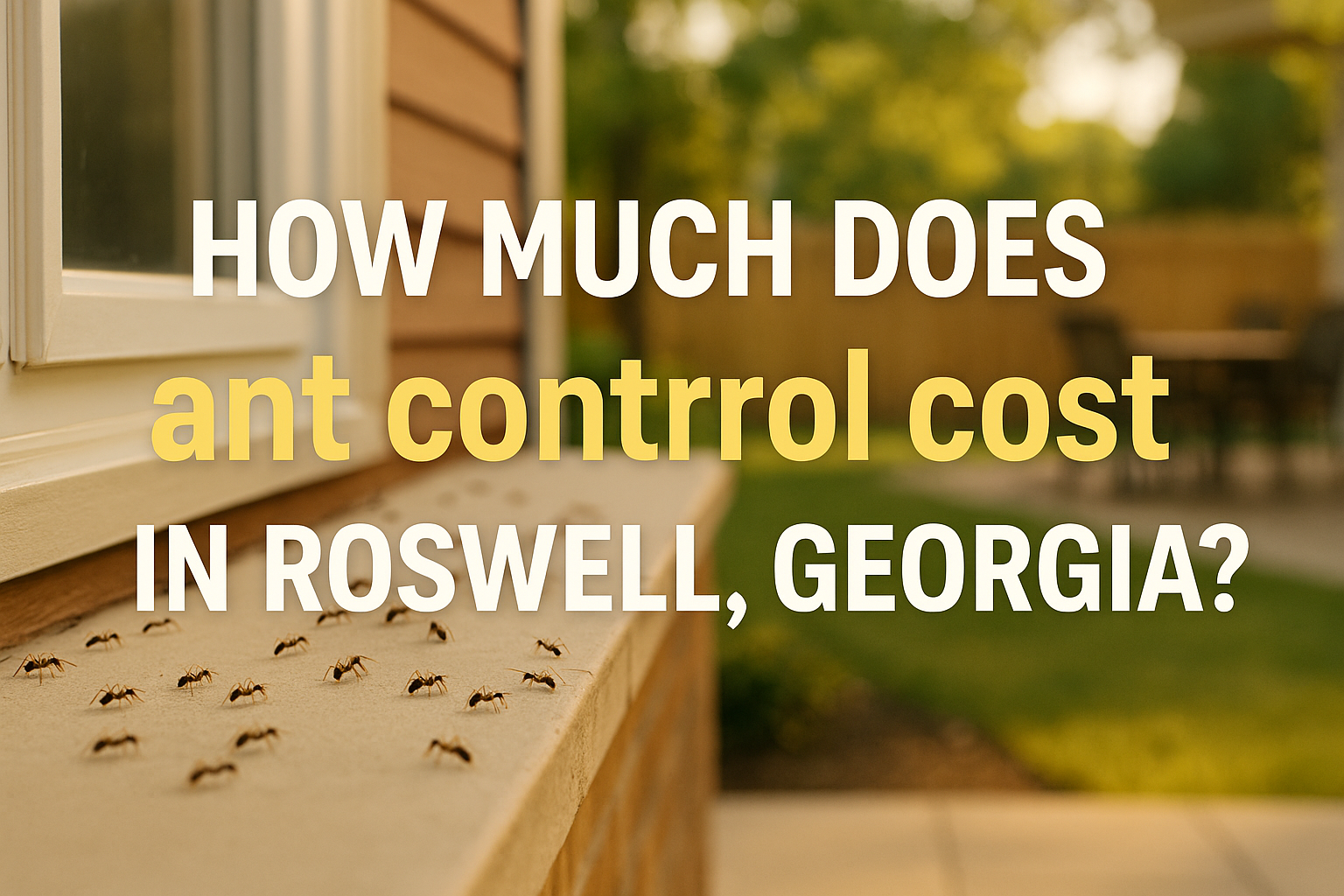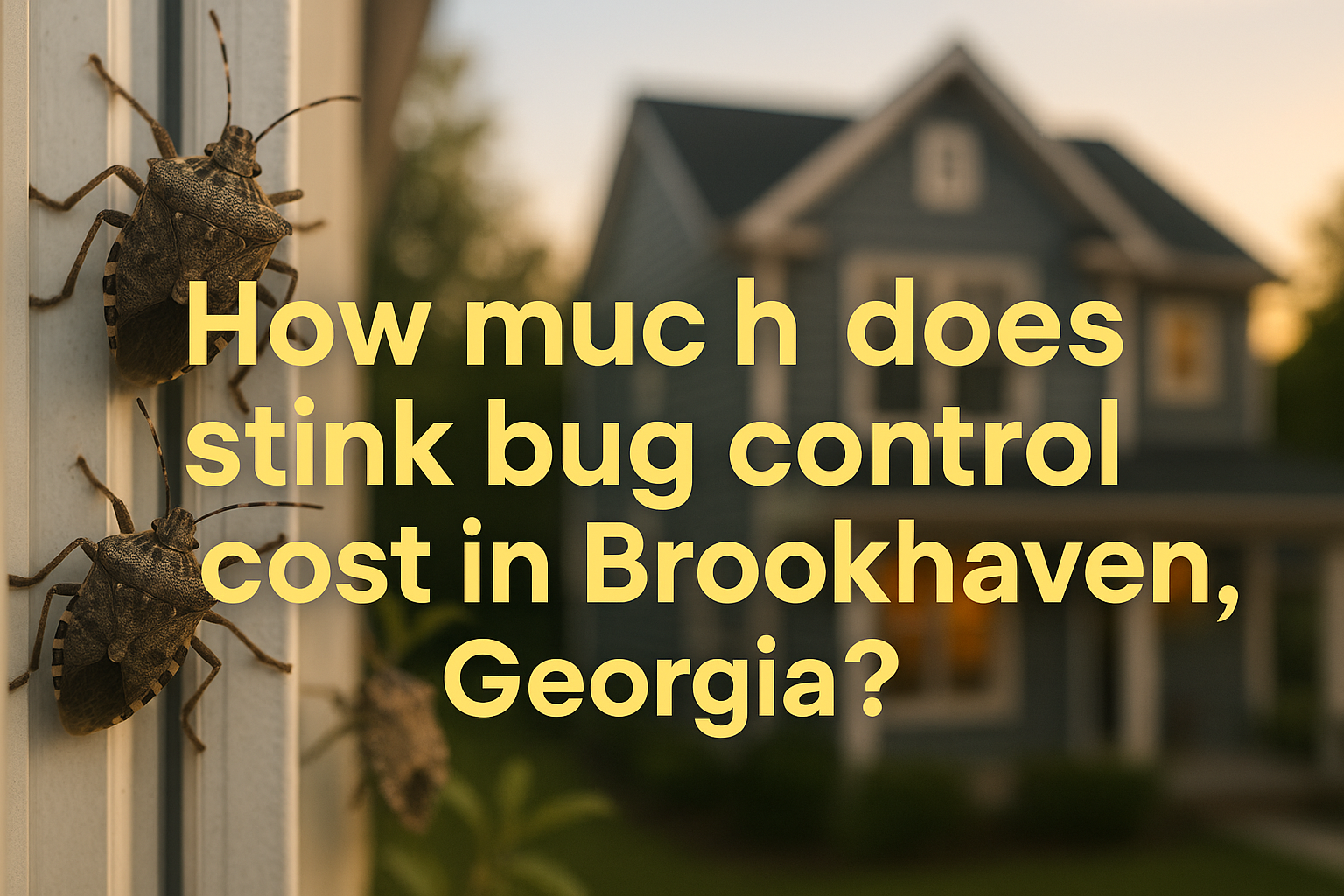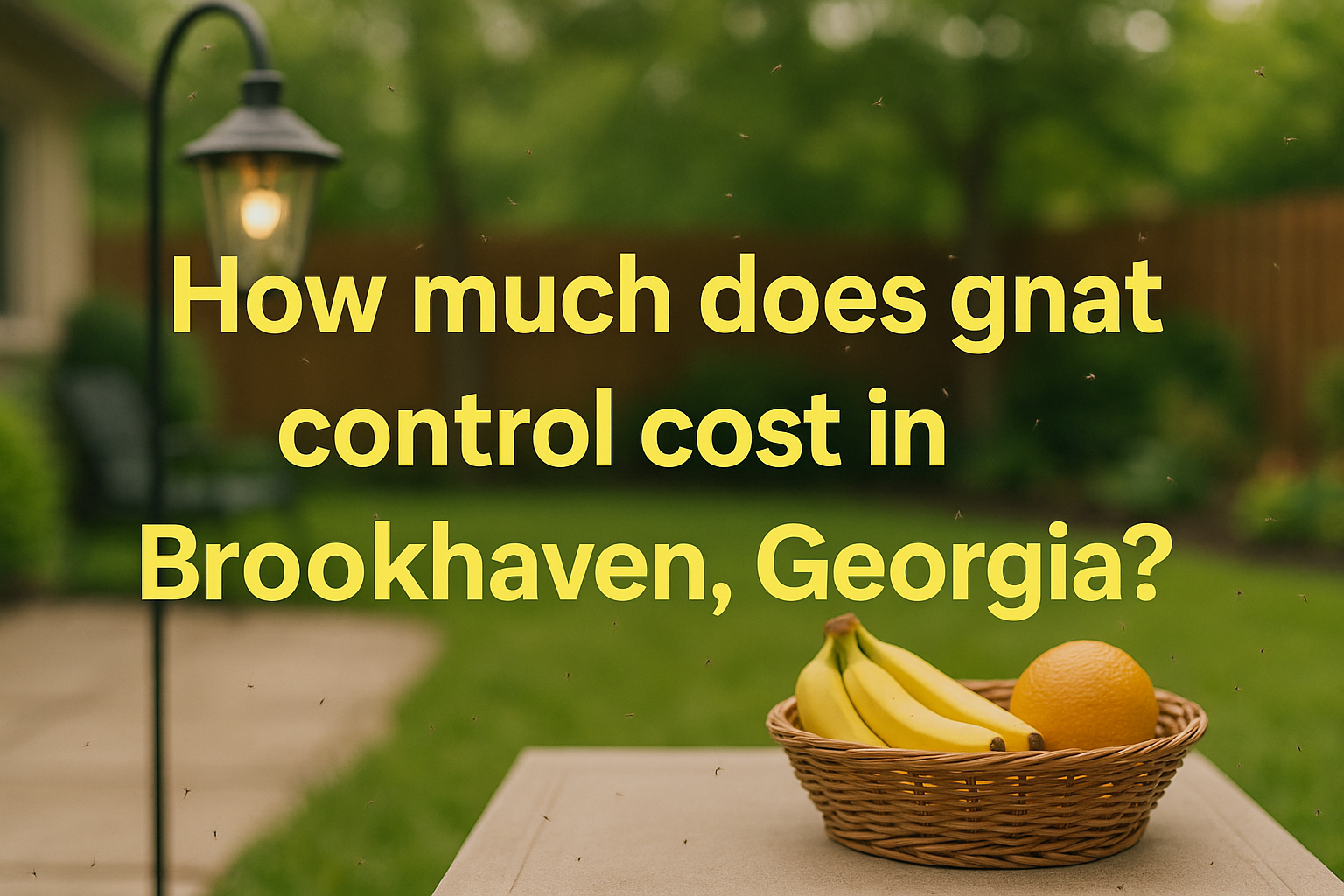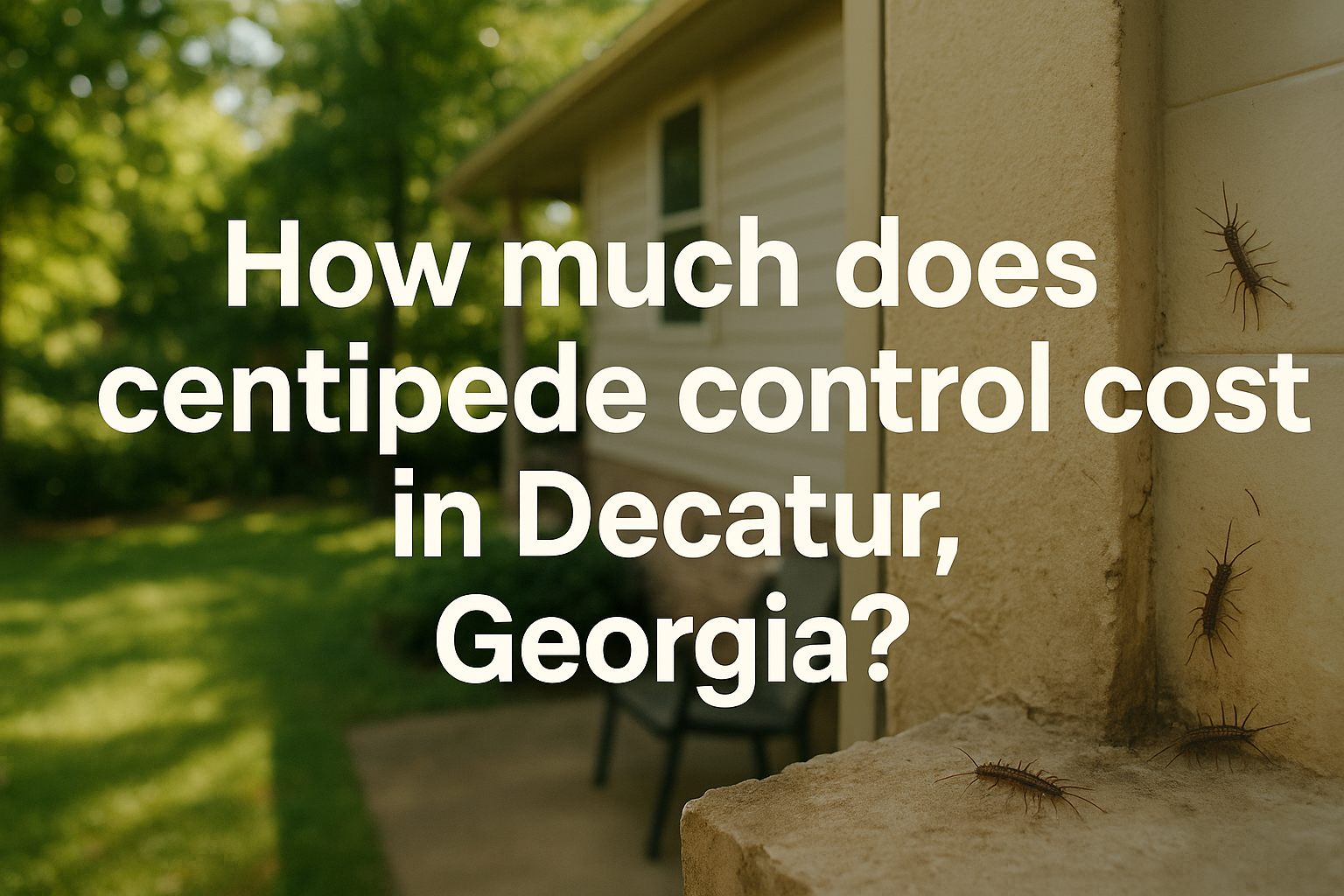Termites in Sandy Springs: A Real Threat for Homeowners
If you own a home in Sandy Springs, you’ve probably heard stories about neighbors dealing with termites. It’s not just talk—those little pests are a big problem around here. The local climate is warm and muggy most of the year, which basically rolls out the welcome mat for termites, especially in neighborhoods with lots of wood-frame homes like Riverside, Chastain Park, and Mount Vernon Woods. Even if your house looks spotless, termites don’t care; they can start eating away at your walls and foundation before you ever notice a thing.
The thing about termites is, their damage adds up fast. We’re not talking small change—homeowners in Sandy Springs have found themselves facing repair bills in the thousands, often before they even realize there’s a problem. It’s not unusual for keeping professional termite control cost between $1,300 and $3,500 for an average-sized home. If you think a quick DIY fix is enough, basic bait systems still run around $430 and may not cut it for severe infestations. And if termites beat you to the punch, repairs on top of treatment can cost another $300 to $650 per structure, depending on how far they’ve gotten.
Every Sandy Springs neighborhood is fair game for these bugs, but older homes in tree-heavy areas like Riverside and Mount Vernon Woods seem especially targeted. Termites don’t play favorites—they’re just looking for a meal. That’s why catching the problem early with professional termite control makes all the difference, both for your wallet and your sanity. If you’re trying to figure out what you’re up against, what your options are, and what to expect in terms of cost, you’re in the right place. We’ll break down exactly what you need to know so you can keep your home standing strong, no matter where in Sandy Springs you live.
What Really Affects the Cost of Termite Control in Sandy Springs?
Let’s get real for a moment—when termites hit your home in Sandy Springs, the question on everyone’s mind is, “How much is termite control going to set me back?” The honest answer: it depends on a handful of important factors. Here’s what you need to know before you start getting quotes or comparing termite control services.
- Size of Your Home: It’s pretty simple—the bigger the house, the higher the price. Larger spaces mean more ground to cover, more labor, more materials, and more hours on the job. If you’ve got a sprawling property in North Springs or a cozy bungalow near Abernathy Greenway, the price reflects the space being protected.
- Extent of the Infestation: Catch a problem early and your wallet will thank you. But if termites have been snacking on your place for years, be ready for extra treatments and possibly even repair work. Heavier infestations mean more product, more trips, and potentially more invasive solutions.
- The Type of Treatment: Not all termite solutions are created equal. You’ve got options from Sentricon® baiting systems, to tried-and-true soil treatments, to full-on fumigation. Bait stations are generally less up front, while soil barriers and tenting are pricier but often beefier solutions. What’s best for you? It comes down to your infestation, your property, and what kind of long-term insurance you want against those wood-munching pests.
- Where You’re Located: Neighborhoods matter. Sandy Springs spots near rivers, creeks, or wooded patches—think Dunwoody Panhandle or anyplace that floods now and then—face higher termite pressure. In those areas, companies might suggest more robust prevention, which bumps up the price but pays off in peace of mind.
- Warranties and Coverage: Some termite pros offer long-term warranties and even repairs if termites come back—definitely something to consider. You’ll pay more for ironclad coverage from a reputable company, but it takes a load off your shoulders if you want full protection (and no surprises down the road).
Curious about ballpark numbers? For a typical home in Sandy Springs, full-service termite control treatments usually run between $1,300 and $3,500. If you just need some preventive bait stations, you’re looking at the lower end. Go for premium, guaranteed termite control plans and the cost is a bit higher—but you get lasting peace of mind.
When you’re ready to defend your home or need a reliable quote, go with a company that explains the process, stands by their work, and knows the ins and outs of Sandy Springs neighborhoods. You’ll get fair pricing, transparent solutions, and a house that’s protected for the long haul.
What Really Affects the Cost of Termite Control in Sandy Springs?
Let’s get real for a moment—when termites invade your home in Sandy Springs, the question on everyone’s mind is, “How much does termite control cost?” The honest answer: it depends on a handful of important factors. Here’s what you need to know before you start getting quotes or comparing termite control services.
- Size of Your Home: It’s pretty simple—the bigger the house, the higher the price. Larger spaces mean more ground to cover, more labor, more materials, and more hours on the job. If you’ve got a sprawling property in North Springs or a cozy bungalow near Abernathy Greenway, the price reflects the space being protected.
- Extent of the Infestation: Catch a problem early and your wallet will thank you. But if termites have been snacking on your place for years, be ready for extra treatments and possibly even repair work. Heavier infestations mean more product, more trips, and potentially more invasive solutions.
- The Type of Treatment: Not all termite solutions are created equal. You’ve got options from Sentricon® baiting systems, to tried-and-true soil treatments, to full-on fumigation. Bait stations are generally less up front, while soil barriers and tenting are pricier but often beefier solutions. What’s best for you? It comes down to your infestation, your property, and what kind of long-term insurance you want against those wood-munching pests.
- Where You’re Located: Neighborhoods matter. Sandy Springs spots near rivers, creeks, or wooded patches—think Dunwoody Panhandle or anyplace that floods now and then—face higher termite pressure. In those areas, companies might suggest more robust prevention, which bumps up the price but pays off in peace of mind.
- Warranties and Coverage: Some termite pros offer long-term warranties and even repairs if termites come back—definitely something to consider. You’ll pay more for ironclad coverage from a reputable company, but it takes a load off your shoulders if you want full protection (and no surprises down the road).
Curious about ballpark numbers? For a typical home in Sandy Springs, full-service termite control treatments usually run between $1,300 and $3,500. If you just need some preventive bait stations, you’re looking at the lower end. Go for premium, guaranteed termite control plans and the cost is a bit higher—but you get lasting peace of mind.
When you’re ready to defend your home or need a reliable quote, go with a company that explains the process, stands by their work, and knows the ins and outs of Sandy Springs neighborhoods. You’ll get fair pricing, transparent solutions, and a house that’s protected for the long haul.
How Sandy Springs Homes and Climate Influence Termite Trouble—and the Cost to Fix It
If you call Sandy Springs home, you already know how hot, muggy summers and steady rainfall can impact just about everything, from your lawn to your foundation. But here’s something you may not realize: these same conditions also make your property a magnet for termites. All that Georgia heat and humidity turns the soil into perfect real estate for subterranean termite colonies. If there’s an easier place for them to thrive, we’ve yet to see it.
Now, add in the homes themselves. In neighborhoods like Glenridge or Hammond Hills, older houses are often built on crawl spaces and wooden foundations—prime targets for termites. Wood plus old-school construction means more cracks, more exposed beams, and more spots for water to sneak in. And as soon as that wood gets damp, termites might as well hang up a “vacancy” sign. Fixing termite issues in these older homes isn’t just tougher, it can also cost more: those tight crawl spaces and hidden nooks make treatment complicated and can bump up your bill.
Don’t think newer homes get a free pass. Sure, some come with modern barriers and preventive tech, but a heavy Georgia rain storm or a week of flooding can change the game fast. Even fresh concrete foundations can trap moisture in low-lying areas like Riverside or Mount Vernon. When that happens, you end up with hidden damp spots—exactly where termites love to set up camp. Moisture and wood contact is like an open invitation.
Keep in mind, termite treatments aren’t one-size-fits-all here. The soil in Sandy Springs can shift between clay, sand, and everything in between—sometimes even in the same backyard. That mix can make it tricky to get a liquid barrier down properly. It might take more treatment products, extra trips, or both, especially if the ground soaks up or moves the protective liquid.
Bottom line: environment, construction age, and even the soil under your grass all play big roles in your risks and your options for termite treatment. There isn’t a simple answer, but being proactive—especially in a climate like Sandy Springs—can save you serious money, time, and headaches down the road.
Keep Your Home Safe From Termites—Without Busting the Budget
If you’re like most Sandy Springs homeowners, you want to protect your house from termites without spending a fortune. Luckily, a bit of upkeep goes a long way. Start by making sure your gutters are clean and free-flowing—clogged gutters mean extra moisture, which is like rolling out the welcome mat for termites. Don’t let water pool around your home’s foundation; check for leaks and fix drainage issues so things stay dry where it counts.
Take a look around your yard—firewood stacked against the house or any wood debris close to siding gives termites easy access. Keep firewood at least 20 feet away and raised off the ground. Old stumps, unused lumber, or even piles of leaves near your foundation can all attract these pests, so keep the perimeter tidy.
Once a year, schedule a termite inspection with a trusted local pro. It might seem like just another line item, but early detection is way cheaper than a major treatment down the road. If your house is close to rivers, creeks, or in an older Sandy Springs neighborhood, these yearly checks are even more important.
When patching, repairing, or making any upgrades to your home, use termite-resistant materials—think treated lumber for fences, decks, and repairs. Keep an eye out for hairline cracks in your foundation or around utility lines. Even a tiny gap can be enough for termites to make their move, so seal them up as soon as you spot them.
Finally, consider chatting with a local pest control company about a maintenance plan. Many offer affordable monthly or quarterly visits, and catching a problem early is always going to be cheaper than waiting until damage is visible.
- Clean gutters and fix drainage issues
- Keep firewood and debris far from your home’s exterior
- Schedule annual inspections—don’t skip!
- Use pressure-treated wood for repairs
- Seal any cracks in foundation or exterior walls
- Consider a maintenance agreement for peace of mind
By staying on top of these simple steps, you’ll make your home less inviting to termites and keep your repair costs down if they do show up. Next, check out our handy seasonal checklist that every Sandy Springs homeowner should have on hand for year-round termite prevention.
When to Take Action Against Termites in Sandy Springs
If you’ve lived in Sandy Springs for even a short time, you know our weather serves up the perfect cocktail for termite trouble. Those warm, wet spring days and early summer nights? That’s prime time for termites to swarm, breed, and make themselves at home in just about any house—especially if it’s older or shaded by trees.
The smart move is to schedule your termite inspections or preventative treatments in late winter or right at the start of spring (think February through May). Why then? Because termites are just starting to stir as the temperatures rise, but most of the big damage hasn’t had a chance to get rolling yet. Catching them early is way easier—and usually a lot cheaper—than trying to chase after a full-blown infestation.
Plus, there’s a practical side: as the season heats up, local pest control schedules get slammed. Wait too long and you might find yourself in a queue, paying more and having to live with that nagging worry. Tackling termite prevention early means you’ll have the best pick of appointment times and pricing, and you’ll beat the seasonal rush.
Even if you spot termite trouble mid-summer or later, don’t worry—it’s never too late for treatment. Year-round options are available if needed, even for those homes that didn’t catch problems during the off-season. But if you love the idea of peace of mind and a house protected before things get serious, aim for that late winter to early spring window.
If your place is in one of Sandy Springs’ classic older neighborhoods or tucked up against woods, acting ahead of the swarm season is especially important. Trust the locals: treat early, and you’ll stay ahead of the pack. Need more seasonal tips? Scroll up for the best ways to keep your home termite-free all year long.
Let’s Keep Your Sandy Springs Home Safe & Termite-Free
Your home deserves the same diligent care your neighbors trust every season. With Anthem Pest, you’re working with local folks who genuinely know Sandy Springs and are committed to helping their community. Whether you think you’ve spotted termite trouble or simply want peace of mind, our local team is only a phone call away.
Don’t wait for termite headaches to get worse. Give us a ring at 877-3718-5196 or visit anthempest.com for your free, zero-pressure property assessment. You’ll get honest advice, a clear explanation of what’s needed, and real options that fit your budget—plus we cover every Sandy Springs neighborhood.
Thousands of local homeowners trust Anthem Pest. Join them today and see how easy professional termite control can be when you count on a neighborly team that’s right around the corner.
Termite Control Questions We Hear Most in Sandy Springs
- How do I know if I have termites in my Sandy Springs home?
Termites are sneaky, but there are some telltale signs. Keep an eye out for mud tubes crawling up your foundation, wood that sounds hollow when you tap it, and piles of discarded wings near windowsills or doorways. These are classic red flags that termites might be making themselves a little too comfortable. - Are annual termite inspections really necessary?
Absolutely. Think of it as a check-up for your house—especially since our humid Sandy Springs climate is basically an open invitation for termites. Yearly inspections catch any issues early, often saving you big headaches and repair costs down the road. - Do professional termite treatments come with a guarantee?
Most pest control companies in Sandy Springs (including us at Anthem Pest) offer warranties for their work. Some even back it up with repair guarantees for added peace of mind, so you’re not left holding the bag if termites come back for round two. - How long does a typical treatment last?
Bait systems and barriers, when maintained, can keep termites at bay for years. But they do need regular annual check-ins to stay in top shape. It’s not a set-it-and-forget-it situation—but the peace of mind is worth it. - What’s the most effective termite treatment here?
The Sentricon® system is a favorite around Sandy Springs for good reason. It’s proven, safe, and keeps working long-term. But honestly, the best treatment always depends on your home’s layout, construction, and termite pressure. - Can I handle termites with DIY solutions?
DIY remedies and over-the-counter baits might help a little with early prevention, but when an infestation hits, you’ll want professional help. Trying to tackle a serious termite problem on your own is risky—and usually ends up costing more in the long run. - Will homeowners insurance cover termite damage repairs?
Unfortunately, most policies don’t. That’s why it’s smart to invest in a prevention or treatment plan, preferably one with a repair warranty. It’s a small price for a big dose of peace of mind. - How soon should I act if I find termites?
Don’t wait. The sooner you treat, the less chance those termites have to munch away and rack up repairs. Fast action almost always means a quicker, less expensive fix.
Got more questions about keeping your Sandy Springs home termite-free? Reach out—we’re here, we’re local, and we know how to keep termites off your guest list for good.

